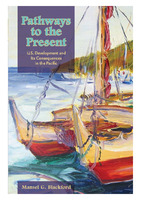Pathways to the Present
U.S. Development and Its Consequences in the Pacific
Author(s)
Blackford, Mansel G.
Collection
Knowledge Unlatched (KU)Number
101442Language
EnglishAbstract
'Pathways to the Present' is a thoroughly researched and concisely argued account of economic and environmental change in the postwar "American" Pacific, covering interactions among native Hawaiian, developmental, military, and environmental issues in in Hawai'i; land- and water-use problems that have intersected with more nebulous quality-of-life concerns to generate policy controversies in the Seattle and San Francisco Bay areas; and economic expansion and environmentalism in Alaska. From there the study considers Hiroshima after its destruction by the atomic bomb in 1945, looking at residents’ desire to combine urban-planning concepts, the effort to remake Hiroshima as a high-tech city in the 1990s, and postwar planning on Okinawa, where American influences were particularly strong. The final chapter examines the growth of tourism on Guam and the use of the island for military purposes and links these to developments in the Philippines and American Sâmoa.


 Download
Download